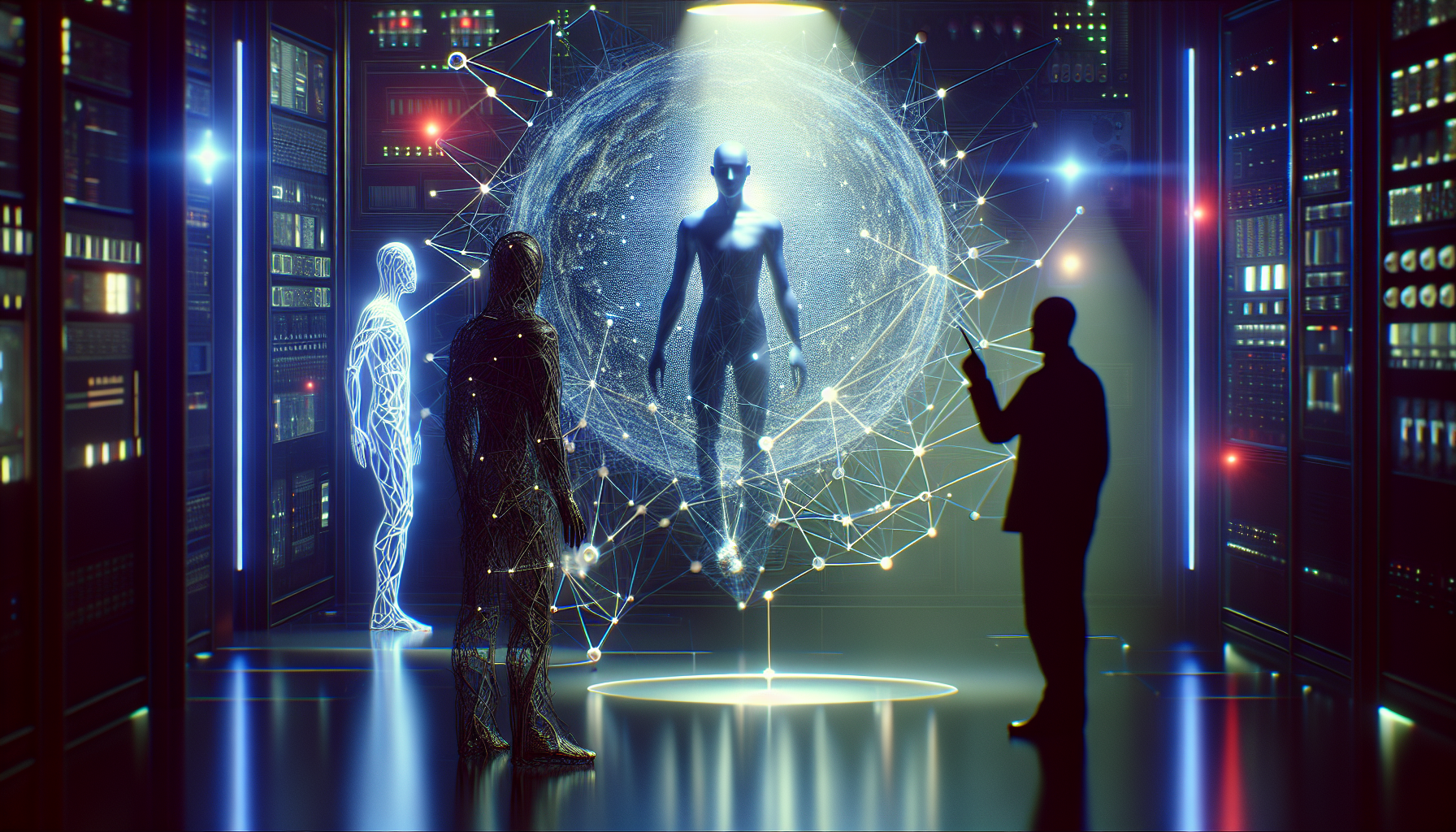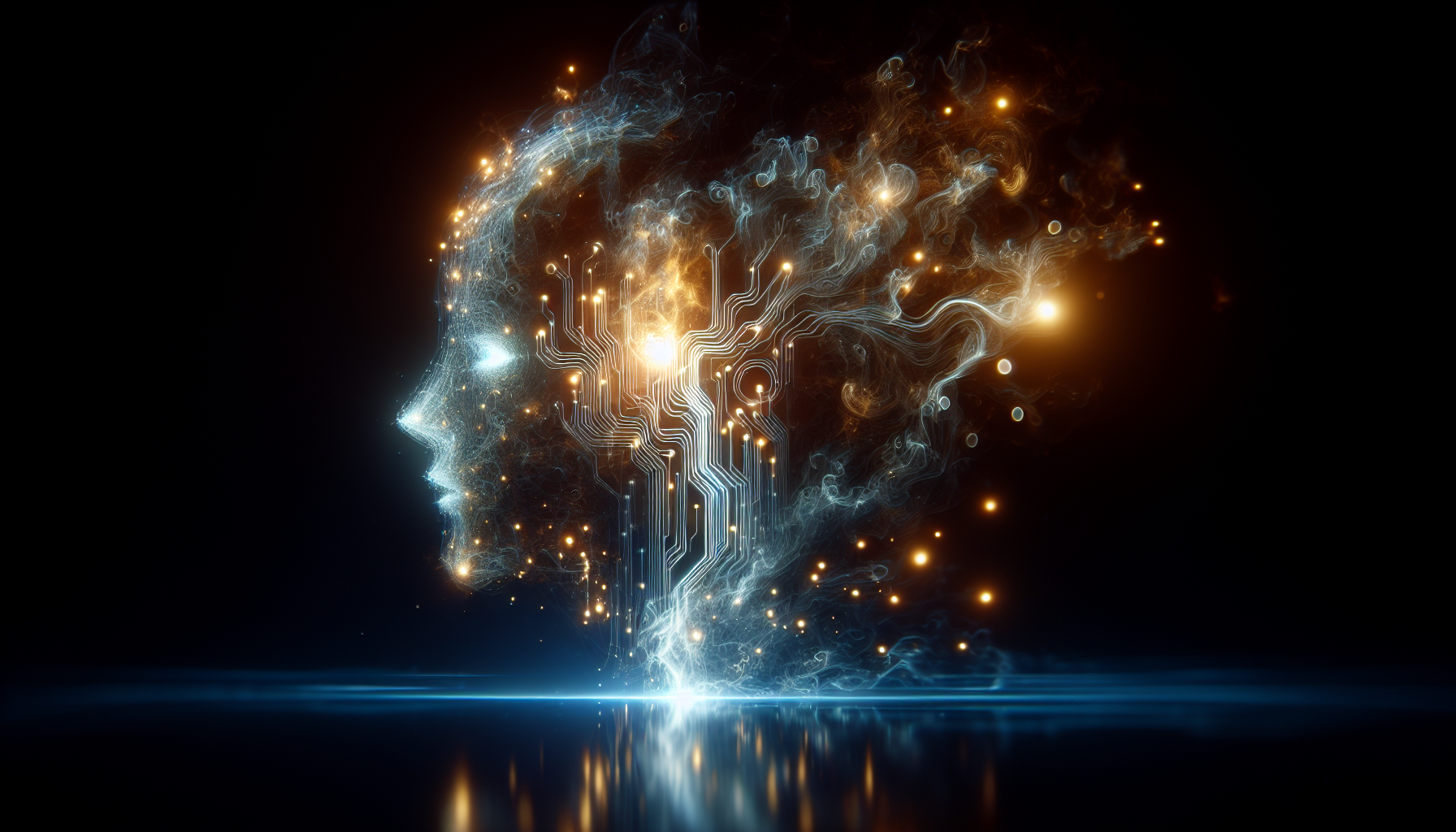Definition and operation of Deepfake
Definition of Deepfake
The term deepfake is a contraction of the English words “deep learning” and “fake”. This technology is based on algorithmsartificial intelligence specially designed for creating or editing audiovisual content, including videos and audio tracks. The result is often so convincing that it can deceive the eye and ear, making it undetectable at first glance to most people. The objective of deepfakes can be playful, artistic, but also malicious, for example aiming to spread false information or damage someone’s reputation.
How Deepfake works
Deepfakes are generated using neural networks, which are computer models inspired by the functioning of the human brain. Two main types of networks are often used in tandem: the GAN (Generative Adversarial Network) and the VAE (Variational AutoEncoder).
The GAN is made up of two parts: the generator and the discriminator. The generator creates images or video sequences while the discriminator evaluates their authenticity. During an iterative learning process, the generator strives to produce increasingly credible content, while the discriminator improves its ability to distinguish it from the originals. This game of cat and mouse leads to a constant improvement in the quality of the content generated.
The VAE in turn learns to compress data (like images) into a smaller feature space and decompress it to reconstruct the original image. By adjusting this feature space, we can modify the reconstructed image, for example by replacing the face of a person with another.
In practice, creating a deepfake first requires collecting large amounts of data, such as images or videos of the target. This data is then used to train the model to understand and imitate the specific characteristics of the target. Once the model is trained, it can generate the fake content with high accuracy.
Impact of Deepfake
The impacts of deepfakes can be multiple, affecting politics, media, security and society in general. Malicious use of this technology can contribute to disinformation, manipulation of public opinion, cyberbullying, and even geopolitical tensions. This is why it is crucial to be informed and aware of this technology, recognizing its possibilities while remaining vigilant in the face of its potential abuses.
The ethical implications and risks of deep fake

THE deepfakes are videos or audio recordings generated using artificial intelligence to create convincing illusions. Although this technology may have harmless applications, such as in the entertainment industry, its ethical implications should not be underestimated.
- Attack on image and privacy: Putting a person in compromising or false situations without their consent can seriously harm their reputation and privacy.
- Manipulation and disinformation: Deepfakes can be used to manipulate public opinion, by creating false statements from influential figures or credibly altering historical events.
- Legal consequences: Deepfakes pose a challenge to legal systems, calling into question the veracity of evidence and the definition of defamation and free speech.
Risks for society
In addition to the ethical implications, deepfakes pose tangible risks for society as a whole.
- Political influence: The ability to create fake videos of politicians could influence the outcome of elections or destabilize governments.
- Psychological impacts: The distribution of malicious deepfakes can cause emotional harm to the individuals who are depicted or those who view them.
- Credibility of information: The proliferation of deepfakes risks undermining public trust in media and information sources, thereby undermining democratic debate.
Faced with these challenges, it is essential that society reacts by developing appropriate detection tools and legal frameworks, while informing and raising public awareness of the risks associated with deepfakes.
Deepfakes pose unprecedented ethical and security challenges for society. It is imperative that industry players, legislators, and the scientific community work together to regulate this technology and minimize its negative impact. Education and vigilance remain the best tools available to the general public to protect themselves against the dangers of deepfakes.
Technological advances in the face of Deepfake

Deepfake detection
Methods for detecting deepfakes are increasing and becoming more sophisticated. Specially designed algorithms can now spot anomalies that escape the human eye. For example, analyzing eye movements or facial expressions can be a way to spot irregularities. Large technology companies like Microsoft And Facebook have invested in tools that scan content for warning signs of manipulation.
Startups, such as Deeptrace Or Sensity, focus exclusively on monitoring and detection of deepfakes, offering solutions to organizations that want to protect their media integrity. They use generative adversarial networks (GANs) to train themselves to recognize the characteristic features of falsified content.
Improved laws and regulations
Beyond technical progress, legislation attempts to keep up with the evolution of the threat of deepfakes. Several countries are developing or have already implemented laws aimed at criminalizing the creation and distribution of misleading content designed with artificial intelligence. Discussions on the ethical and legal implications of deepfake also animate international bodies, which seek to establish universal standards for the treatment of these issues.
In France, modifications to the Penal Code could be considered to strengthen the fight against the dissemination of deepfakes, while ensuring respect for freedom of expression and the protection of privacy.
Education and awareness
Faced with this panorama, public education becomes crucial. It is important to raise awareness about the issue of deepfakes so that users are vigilant and able to doubt what they see online. Information campaigns, led by governments and NGOs, as well as educational modules in schools, are beginning to emerge.
Strengthening online platforms
Online platforms also take their share of responsibility. Giants like Google, Twitter And Youtube are implementing increasingly strict policies regarding the publication of deepfakes. They are developing content verification tools and strengthening their moderation teams. Some of these actors even partner with researchers and academics to stay ahead of falsification techniques.
Technological advances in the face of deepfake are the prerogative of collaboration between technicians, legislators, educators and online platforms. While the challenges are great in the face of this constantly evolving threat, the international community is demonstrating resilience and innovation to protect the integrity of information and the security of citizens. Time will tell whether these joint efforts will be sufficient to counter the potentially destructive effects of deepfakes.
How to detect Deepfakes

To detect deepfakes, it is important to be vigilant and use dedicated technological tools. Here are key steps and tools to consider:
- Evaluate the video source: Check the reliability of the source sharing the content.
- Observe visual or auditory inconsistencies: Look for abnormalities in facial expressions, lip movements, or speech timing.
- Pay attention to details: Mistakes in blinking, skin textures, or backgrounds can indicate manipulation.
- Use detection software: Platforms like Microsoft Video Authenticator can help identify deepfakes.
- Analyze the behavior: If the person’s behavior or words do not match what is known about them, the video could be falsified.
How to protect yourself against Deepfakes
Guarding against deepfakes involves a combination of personal vigilance and technical measures:
- Educate and raise awareness: Understand how deepfakes work and learn how to detect them.
- Keep your software up to date: Security updates can prevent attack vectors exploiting deepfakes.
- Use multi-factor authentication: Particularly for sensitive information, multi-factor authentication makes it more difficult to misuse personal data from deepfakes.
- Strengthen legislation: Support policies and laws that aim to combat the spread of deepfakes.
- Request an expertise: If in doubt, request analysis from professionals or competent authorities.
THE deepfakes represent a significant challenge in our digital information age. They require a proactive approach that combines user education, the use of advanced detection technologies and a suitable legislative framework. By remaining vigilant and informed, we can not only detect but protect ourselves from the influence of deepfakes and defend the truth in communications.

Leave a Reply